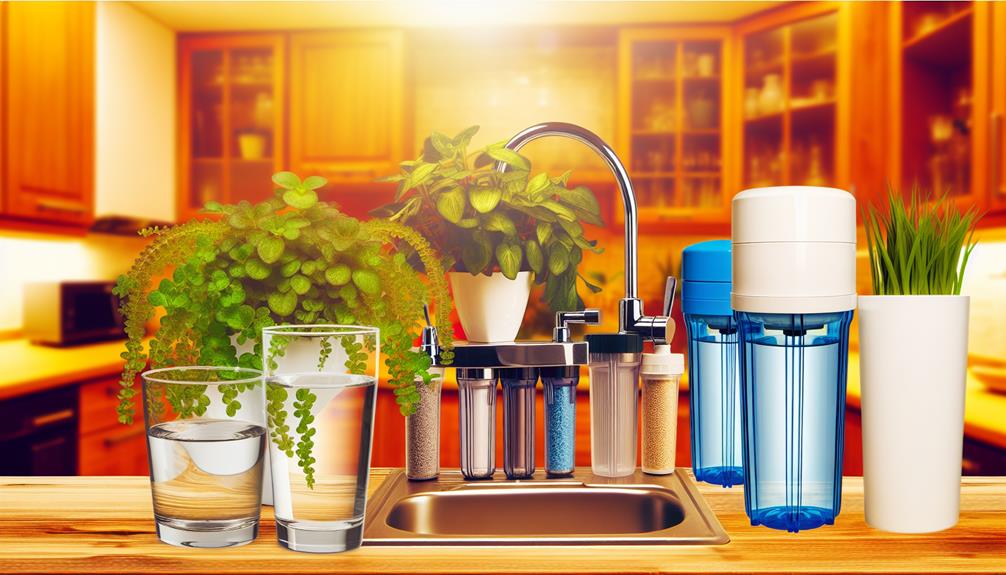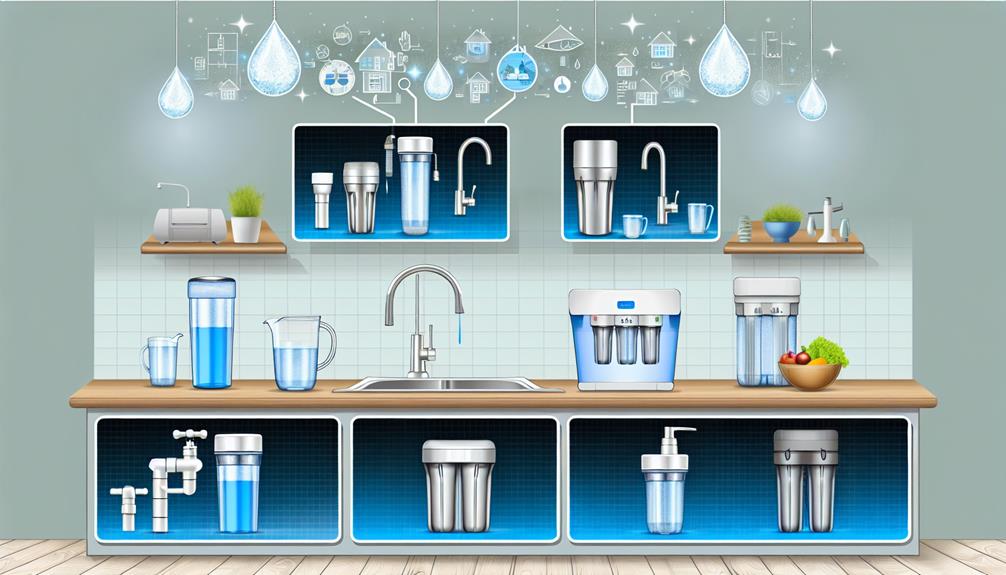Navigating the vast ocean of home water filtration systems can be as challenging as finding a drop of pure water in a polluted river. You're aware of the myriad of contaminants that may be lurking in your tap water, from sediments and bacteria to harmful chemicals and heavy metals.
In your quest for a solution, you've likely encountered terms like reverse osmosis, activated carbon, and UV purification, each claiming to be the pinnacle of water filtration technology. As you consider the health of your family and the quality of the water you drink and use daily, it's crucial to understand the expert picks for top home water filtration systems.
But with various systems tailored to different needs and budgets, how do you discern which is the best fit for your home? Stay with us, as we're about to unveil the filtration systems that professionals trust, helping you to make an informed decision for your household.
Understanding Filtration Technologies
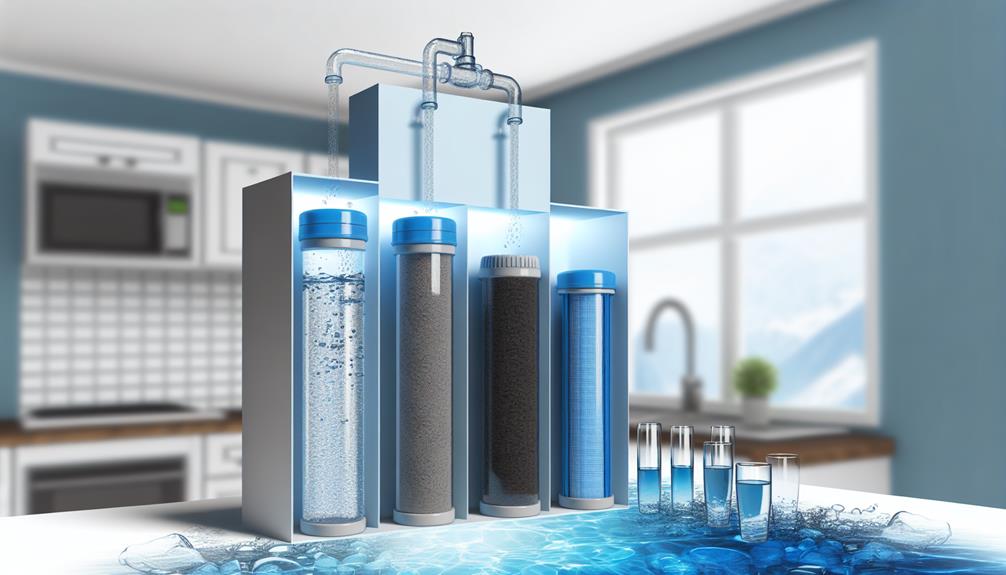
Various water filtration technologies exist to remove contaminants from your home's water supply, each employing different methods to ensure purity and safety.
One key method involves sediment trapping, which is a mechanical process. Here, water passes through filters with varying pore sizes that block particulate matter, such as dirt, rust, and sand. The efficiency of this method lies in its multi-stage setup, where progressively finer filters are used to trap smaller particles. It's crucial to regularly replace these filters to maintain optimal performance.
Another sophisticated technology is ion exchange, commonly used to soften hard water by removing minerals such as calcium and magnesium. In this process, water flows through a resin bed, and the unwanted ions are replaced with sodium or potassium ions. This exchange prevents scale buildup in pipes and appliances, enhancing their longevity. Precision in the resin's ion-selectivity and regeneration cycle timing is imperative for the efficacy of this system.
Both methods are integral to comprehensive water filtration systems, addressing a substantial range of common water quality issues. Selecting a system for your home requires analyzing your water's specific contaminants and pairing them with the appropriate filtration technology to achieve the desired quality.
Reverse Osmosis Systems Reviewed
Reverse osmosis systems, often referred to as RO, employ a high-pressure pump to force water through a semipermeable membrane, effectively removing a wide array of contaminants down to the molecular level. These systems are a cornerstone in the water purification industry, boasting a high efficiency in filtering out unwanted solutes. However, membrane maintenance and water waste are two critical aspects you must consider when evaluating RO systems.
To enhance your understanding of RO systems, consider the following technical details:
- Membrane Maintenance: The longevity of an RO system is contingent upon regular maintenance of its semipermeable membrane. This component is susceptible to fouling – a process where particulates and microorganisms accumulate on the membrane surface, impeding its performance. To mitigate this, it's imperative to adhere to the maintenance schedule provided by the manufacturer, which typically includes periodic cleaning and eventual replacement of the membrane.
- Pre-Filtration Requirement: To protect the RO membrane from premature fouling, a pre-filtration stage is necessary to remove larger particles. The efficiency of the RO system is directly linked to the effectiveness of this pre-treatment step.
- Water Waste: RO systems have a higher ratio of water waste compared to other filtration methods. For every gallon of purified water, several gallons may be discharged as waste. It's essential to consider this aspect, as it impacts both the environment and operational costs. Assessing water efficiency rates and waste reduction features of different RO systems is crucial in making a sustainable choice.
Activated Carbon Filters Explained
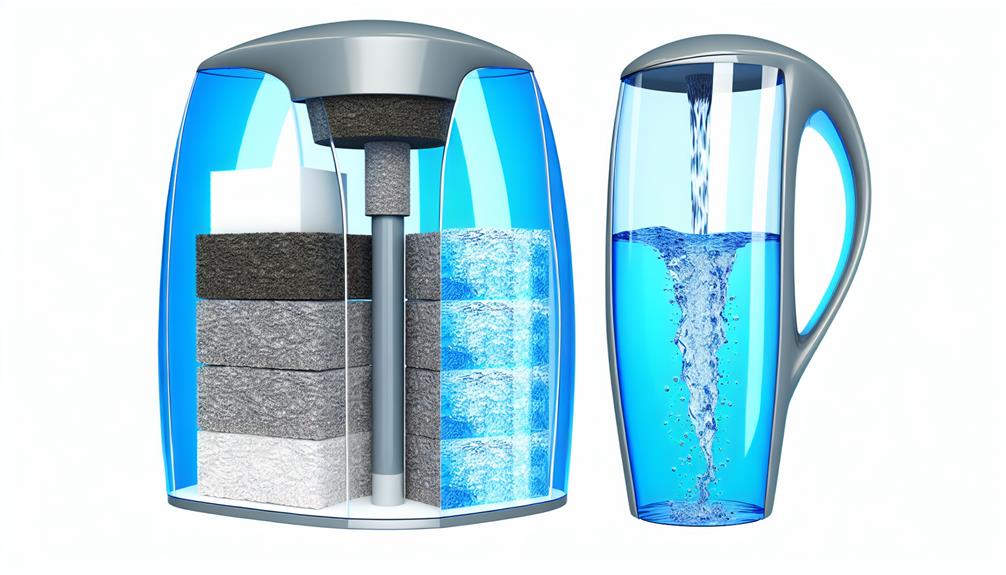
Activated carbon filters, a key player in residential water treatment, leverage adsorption to eliminate contaminants from your water supply. This process involves the removal of particles at a molecular level, as they bind to the surface of the activated carbon. The efficacy of these filters lies in the extensive surface area of the carbon material, typically derived from coconut shells, wood, or coal.
Delving into carbon advantages, these filters excel at reducing chlorine, sediments, volatile organic compounds (VOCs), and taste and odor issues. They're particularly adept at improving water aesthetics, which is crucial for your drinking and cooking needs. However, they don't effectively remove minerals, salts, or dissolved inorganic compounds.
Regarding filter lifespan, it's pivotal to understand that the adsorptive capacity isn't infinite. The longevity of an activated carbon filter hinges on the concentration and volume of contaminants, as well as the water flow rate through the filter. Typically, you'll need to replace these filters every 3 to 6 months, but this can vary based on usage and the specific filter design. To maintain optimal performance and water quality, adhere to the manufacturer's recommended replacement schedule.
Whole House Filtration Solutions
To ensure comprehensive water quality throughout your home, whole house filtration systems integrate with your main water line, capturing contaminants before they reach any faucet or appliance. These systems are particularly adept at sediment trapping, which is essential for protecting your plumbing and appliances from the wear and tear caused by particulate matter.
When analyzing whole house filtration solutions, consider these critical aspects:
- Filter Media Efficiency: The type of media used—such as activated carbon or specialized resin—determines the system's effectiveness in removing specific contaminants. It's crucial to match the filter media to the impurities prevalent in your water supply.
- Flow Rate Compatibility: Your system must support a flow rate that corresponds with your household's water usage to prevent any drop in water pressure. Analyze the gallons per minute (GPM) rating against your peak water consumption.
- Maintenance Requirements: Assess the frequency and ease of filter replacement. Some systems feature clear housings for visual inspection, while others may have longer-lasting filters that reduce maintenance efforts.
Bear in mind, the longevity and performance of your whole house water filtration system hinge on regular maintenance and timely replacement of filter elements. Neglecting these requirements can lead to reduced efficiency in sediment trapping and overall filtration efficacy.
UV Water Purifiers Highlighted
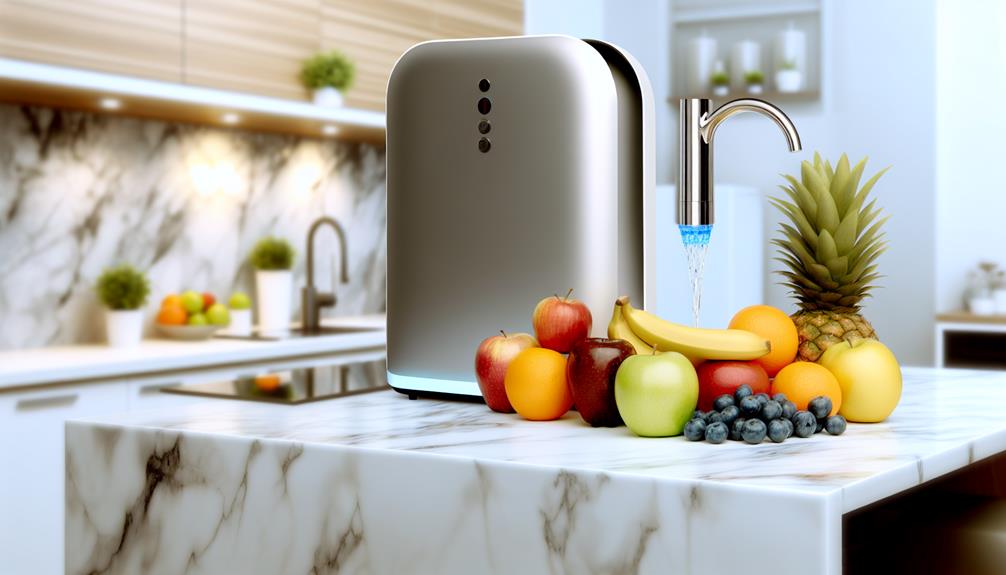
Shifting focus to ultraviolet (UV) water purifiers, these systems employ UV light to eradicate bacteria and viruses without introducing chemicals into your water supply. Analyzing their microbial efficacy, it's essential to understand that the potency of UV purification hinges on the dosage of UV light, which is a function of intensity and exposure time. A higher dose translates to greater disinfection capabilities, effectively inactivating microorganisms by disrupting their DNA and preventing reproduction.
Delving deeper, you must consider the water's clarity, as turbidity can shield pathogens from UV exposure. Pre-filtration steps are often necessary to optimize the UV light's contact with microbes. Additionally, the UV lamp's wavelength, typically at 254 nanometers, is crucial for maximum germicidal effectiveness.
You'll find maintenance costs for UV systems to be relatively low; however, regular upkeep is imperative for sustained performance. You're responsible for replacing the UV lamp annually, even if it still emits light, due to the decline in germicidal output over time. Furthermore, quartz sleeves that house the lamps require periodic cleaning to prevent scaling or fouling, which can impede UV transmission.
Conclusion
In conclusion, you've explored cutting-edge filtration technologies to secure clean, safe water in your home.
From the thorough contaminant removal of reverse osmosis systems to the chemical-reducing prowess of activated carbon filters, and the extensive protection of whole-house units to the germicidal efficiency of UV purifiers, your options are robust.
Analyze your specific water quality concerns, space, and budget to select a system that aligns with your household needs and technical expectations for optimal water purity.
